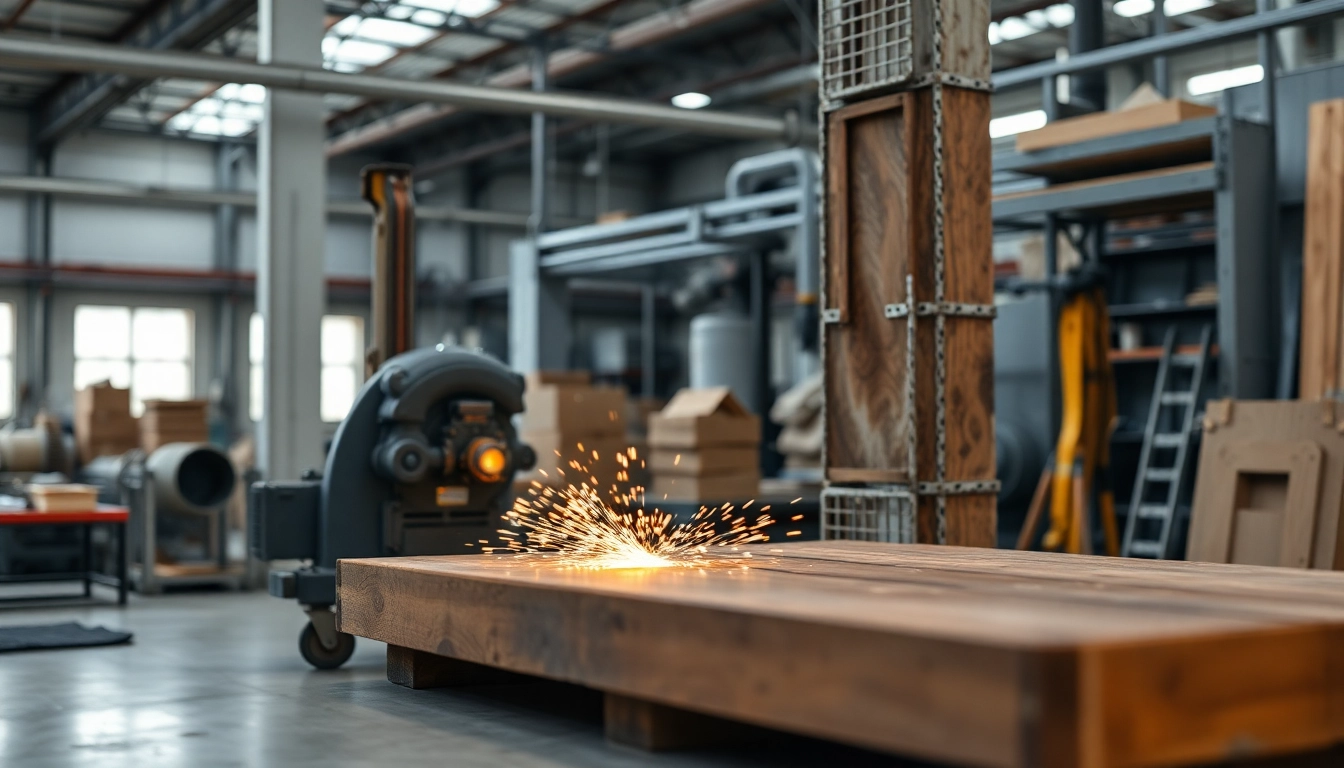Understanding Liquid Packaging Machines
What Is a Liquid Packaging Machine?
A liquid packaging machine is an essential piece of equipment in the manufacturing and distribution industries, primarily responsible for filling liquids into bottles, pouches, or containers. These machines streamline the packaging process, ensuring that products are sealed, labeled, and ready for distribution with minimal human intervention. Whether it’s for food and beverages, pharmaceuticals, or personal care products, liquid packaging machines play a pivotal role in maintaining product integrity and enhancing efficiency on production lines.
Types of Liquid Packaging Machines
Liquid packaging machines come in various types, each tailored to the specific needs of different industries. Understanding these types is crucial for selecting the right equipment. The most common types include:
- Filling Machines: These are used to dispense a specific volume of liquid into containers. They can be further categorized into volumetric, piston, and gravity fillers.
- Cap Filling Machines: These machines are designed to seal the containers after filling. They ensure that each cap is applied correctly to prevent leaks.
- Labeling Machines: After filling and capping, labeling machines ensure that each product is correctly labeled for branding and regulatory compliance.
- Pouch Filling Machines: These are specialized machines that fill liquid into pre-made pouches, often used for sauces and soups.
- Carton Filling Machines: Designed for bulk liquids, these machines fill large containers or cartons, typically used in industrial settings.
Key Features to Look For
When selecting a liquid packaging machine, it’s crucial to consider several key features:
- Automation Levels: Higher automation reduces labor costs and increases efficiency. Fully automated machines are equipped with sensors and programmable logic controllers (PLCs) to manage operations.
- Speed and Capacity: The output speed (bottles per hour) and the machine’s capacity should match your production needs. Assessing these metrics can help prevent bottlenecks in the production line.
- Versatility: Look for machines capable of handling a variety of container types and sizes to accommodate different products.
- Ease of Maintenance: Machines that are designed for easy cleaning and maintenance can minimize downtime and extend the equipment’s lifespan.
- Safety Features: Safety should be a priority, particularly in food and pharmaceutical industries. Look for features that protect workers and prevent contamination.
Benefits of Using a Liquid Packaging Machine
Increased Efficiency in Production
One of the most significant advantages of using a liquid packaging machine is the boost in production efficiency. Automated systems significantly reduce the time required for packaging, allowing companies to process larger quantities in shorter time frames. For instance, while manual filling might allow for 50 bottles per hour, automated machines can boost this to 400-500 bottles per hour, directly impacting both throughput and profitability.
Consistency and Quality Control
Maintaining product quality and consistency is vital, especially in industries like food and pharmaceuticals. Automatic liquid packaging machines provide precise filling capabilities that reduce variability in fill volumes. This consistency not only satisfies regulatory standards but also strengthens brand reputation. Additionally, equipped with real-time monitoring systems, these machines can quickly identify defects in the packaging process, allowing for immediate corrective action.
Cost-Effectiveness Over Time
While the initial investment in a liquid packaging machine may be substantial, the long-term cost savings can be significant. Automated systems decrease labor costs and minimize waste through precise dispensing. Furthermore, by reducing downtime and maintenance costs through reliable mechanisms, businesses can enjoy lower operating expenses over time. A well-selected machine can effectively pay for itself within just a few years depending on production volume.
Choosing the Right Liquid Packaging Machine Supplier
Factors to Consider
Choosing the right Liquid Packaging Machine Supplier is just as critical as choosing the equipment itself. Factors to consider include:
- Industry Experience: Suppliers with experience in your specific industry are more likely to understand your unique challenges and requirements.
- Machine Quality: Assess the durability, reliability, and technology behind the machines offered. Request information on their research and development approaches and manufacturing practices.
- After-Sales Support: Comprehensive customer support, including installation, training, and maintenance services, is crucial for successful machine integration and operation.
- Customizability: The ability to customize machinery according to your specific requirements can also be a significant advantage, allowing for optimal performance based on your packaging needs.
- Reputation: Look for suppliers with strong references and a positive reputation in the industry through reviews, case studies, and testimonials from other clients.
Comparing Supplier Options
Once you’ve identified potential suppliers, comparing their offerings is key to making an informed decision. Establish a standardized evaluation method, considering factors like:
- Pricing: Examine pricing structures not just for the machines themselves but also for maintenance and support.
- Lead Times: Assess how quickly each supplier can provide the machinery to avoid delays in your production schedule.
- Warranty and Service Agreements: Evaluate the warranty terms and the scope of any service agreements, as this reflects the supplier’s confidence in their product.
- Case Studies: Review past implementations of similar machines in your industry to gauge performance and satisfaction levels.
Evaluating Customer Support and Services
Customer support can significantly impact the operational success of your liquid packaging machine. Evaluate the supplier’s approach to customer service by considering metrics such as response times, availability of technical support, and the comprehensiveness of their training programs. Suppliers that offer extensive training resources can expedite your machine’s integration into your operations.
Best Practices for Operating Liquid Packaging Machines
Maintenance and Safety Protocols
Regular maintenance is paramount to ensuring the optimal performance of liquid packaging machines. Here are some best practices:
- Scheduled Maintenance: Implement a strict maintenance schedule that includes regular inspections and servicing according to the manufacturer’s specifications.
- Operator Training: Ensure that staff members are adequately trained on operating and maintaining the machine safely, reducing the risk of accidents.
- Use of Proper Personal Protective Equipment (PPE): Ensure that operators are equipped with appropriate PPE to safeguard against exposure to hazardous materials.
- Documenting Procedures and Issues: Maintain a log of operating procedures, performance metrics, and any issues encountered to facilitate troubleshooting and continuous improvement.
Training for Staff
Training employees is essential for optimizing the use of liquid packaging machines. Regular training sessions should encompass equipment operation, troubleshooting techniques, and safety practices. Providing operators with in-depth knowledge can help avoid costly mistakes and ensure smooth operations. Additionally, consider cross-training staff to ensure that multiple team members can operate the machinery in case of absences.
Monitoring Performance Indicators
Establishing key performance indicators (KPIs) is crucial for measuring the operational efficiency of liquid packaging machines. Common KPIs include:
- Production Rate: The number of units produced per hour is a clear indicator of efficiency.
- Downtime: Track machine downtime due to maintenance or malfunction to identify areas for improvement.
- Quality Control Metrics: Monitor the number of rejected products due to fill volume discrepancies or packaging defects.
- Energy Consumption: Evaluate the energy efficiency of the machines to optimize operational costs.
Future Trends in Liquid Packaging Technology
Innovations in Packaging Solutions
The liquid packaging industry is continually evolving, driven by advancements in technology and changing consumer preferences. Innovations like smart packaging solutions, which utilize sensors to track product freshness and inventory levels, are becoming increasingly popular. Furthermore, the integration of machine learning and AI capabilities can improve machine adaptability and accuracy through predictive analytics.
Impact of Sustainability on Packaging Types
As sustainability becomes a priority for consumers and businesses, liquid packaging solutions are adapting accordingly. There is a growing trend towards using recyclable materials and biodegradable pouches and containers. Suppliers are increasingly focused on developing sustainable packaging solutions that minimize environmental impact while maintaining efficiency and safety.
Automated Systems and IoT Integration
The advancement of the Internet of Things (IoT) is set to revolutionize liquid packaging machines. By integrating these technologies, companies can monitor operations remotely, improve predictive maintenance, and gather valuable data analytics insights. The future of packaging lies in smart machines that can communicate with each other and supply chains, leading to enhanced efficiency and reduced operational costs.



